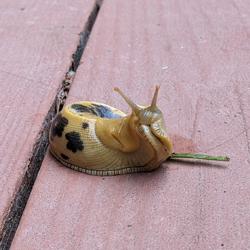Kohonen self-organising maps and Adaptive resonance theory
I don't get why the Kohonen self-organising maps and the Adaptive resonance theory use some unsupervised rules. Can someone gives me a clue? cheers !!
Kohonen takes some inputs as "group examples" and then tries to group the rest of the inputs around those examples. That´s why it´s unsupervised, the patterns don´t have an output value or class assigned to them. You are just trying to cluster them by similarities in the pattern population.
ART does the same in a more complicated way.
Greetings!
Vicente
ART does the same in a more complicated way.
Greetings!
Vicente
Quote:
Original post by Vicente
Kohonen takes some inputs as "group examples" and then tries to group the rest of the inputs around those examples. That´s why it´s unsupervised, the patterns don´t have an output value or class assigned to them. You are just trying to cluster them by similarities in the pattern population.
ART does the same in a more complicated way.
Greetings!
Vicente
Okay, because I did not get the meaning of cluster. I'm writing a dissertation about ANN in video games...
In a supervised training for example we've got some inputs and outputs. the net needs to be trained in order to find some weights. So the purpose is to find the weights that generalise the rule.
My problem in unsupervised rule is I don't get the purpose of the rule.
What do you mean by grouping?
Could you give me an example?
I will try...
What we do in SOMs/ART is that we try to group "similiar" patters together. We use different measures to determine if two patterns are similiar, and if they are, we group them into the same class. If they arent, we make a new class, and assign the pattern to the newly formed class. The similiarity measures are simple mathematical formulae. Try looking up in Google, or some Neural Networks textbook for more information.
Best of Luck
What we do in SOMs/ART is that we try to group "similiar" patters together. We use different measures to determine if two patterns are similiar, and if they are, we group them into the same class. If they arent, we make a new class, and assign the pattern to the newly formed class. The similiarity measures are simple mathematical formulae. Try looking up in Google, or some Neural Networks textbook for more information.
Best of Luck
Quote:
Original post by sidhantdash
I will try...
What we do in SOMs/ART is that we try to group "similiar" patters together. We use different measures to determine if two patterns are similiar, and if they are, we group them into the same class. If they arent, we make a new class, and assign the pattern to the newly formed class. The similiarity measures are simple mathematical formulae. Try looking up in Google, or some Neural Networks textbook for more information.
Best of Luck
Thanks guys, indeed I've got lots of books dealing with ANN, but I find the chapters concerning unsupervised learning very hard to understand. Thanks to you it's becoming clear now.
Cheers !!!
This topic is closed to new replies.
Advertisement
Popular Topics
Advertisement
Recommended Tutorials
Advertisement






